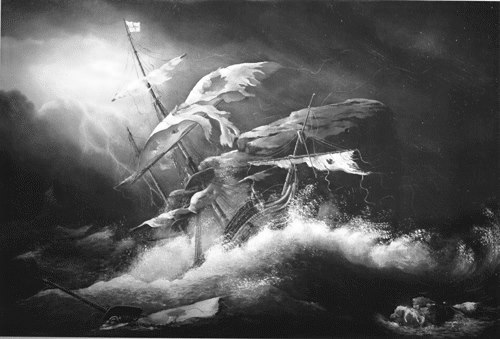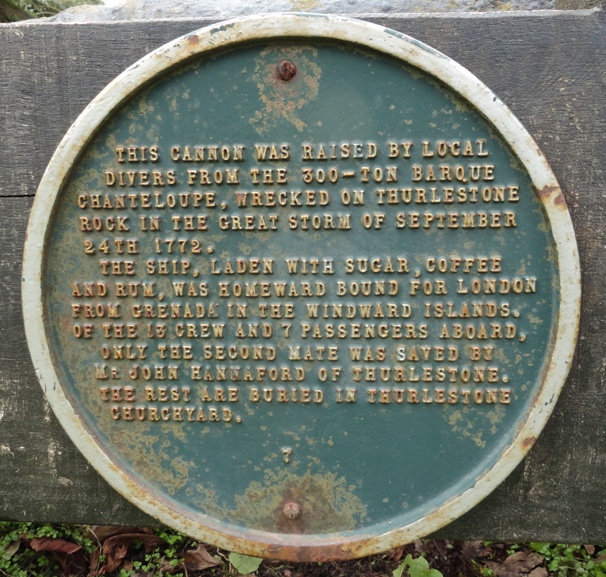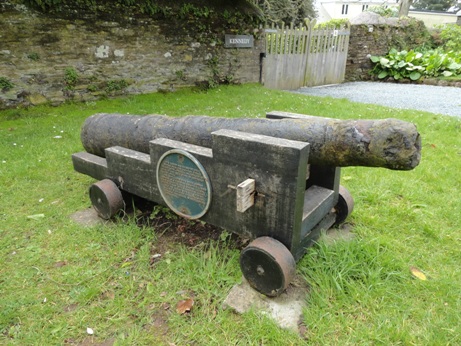Chanteloupe 1772 (West Indiaman)
N50 15.357 W3 51.824

The above painting depicting the Chanteloupe is by artist Roger F Jones a it can be found at: http://www.chewvalleyart.co.uk/picture_seascapes.html
The following picture shows Neville Oldham, Kendall McDonald, Micky Everet and Dave Illingworth investigating the cannon raised from the Chanteloup in 1988.
The 300 tonne ship ‘Chanteloupe’ was wrecked on Thurlestone rock in September 1772. There she remained under a few feet of sand until she was found by divers in the 70’s. All that remains are cannon and musket shot. One of the cannon was raised by Neville Oldham in—. After restoration it found its new home on the green opposite Thurlesone Church. She was sailing to London from the West Indies with a cargo of Coffee, sugar, rum, and Madeira wine when she encountered a severe storm that claimed the lives of over fourteen ships that day. Following her wrecking there was a local rumour that she was carrying valuable cargo. There were also rumours that the bodies of the dead were mistreated which is backed up by the following newspaper report.
Report from an eye witness of the wrecking in the ‘Exeter Flying Post’ October 9th 1772
“Your favour came duly by hand, and would have been soon answered, but am just returned from a barbarian country by which I mean I have been five days absent from Dartmouth to the westward about twenty miles on a most melancholy affair. A ship around 300 tuns from from the Grenadoes for London laden with sugar, coffee, rum & Madeira wine was wrecked in Bigbury bay last week and out of the twenty persons only one was saved, which was the second mate, and he, for some days remained quite stupefied. There were seven passengers on board the principle of whom were John Burke esq (who was a man of immense fortune having sold a plantation only days before departure for £32.000 pounds and had a brother in London Timothy Plip esq and his lady ,native of Ireland. The ship by all accounts had great treasure on it. There were twelve of the bodies washed on shore during my stay and the inhuman country people strip’d the quite naked and left them on the rocks. I leave you to judge the dismal shocking sight we beheld, indeed I cannot describe it. I should have much rather been excused of going but an officer of the customs, the duty called me.
It was really dangerous to be among such wretches. There were between 4000 and 5000 persons assembled, much of whom, for the sake of a little pelf, would be guilty of the greatest acts of cruelty. I do assure you that could wish to see one half of them hanged on the cliffs, for example to the rest. The Lady was seen hanging by one arm to the rock and no person would go to save her , tho there was not the least danger. She was with child and near her time . Those that washed on shore we took care to bury them in Thurlestone churchyard.”
The following photo shows the cannon in its current location on the green in Thurlestone in South Devon.

